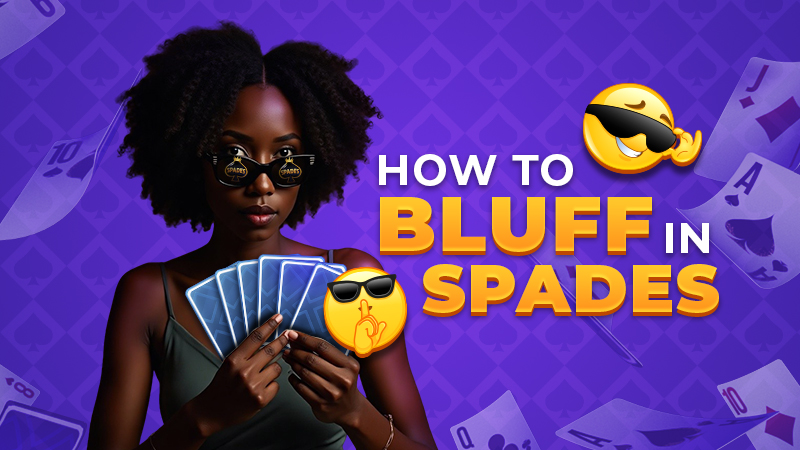In this guide, you’ll learn how to bluff effectively in Spades, with practical tips, real gameplay examples, and common pitfalls to avoid.
1. What Does Bluffing Mean in Spades?
Bluffing in Spades is the art of making your opponents believe something untrue about your hand or your intentions. You might pretend to have fewer or more high cards than you do – or play in a way that encourages your opponents to make incorrect assumptions.
The key? Bluffing legally. You can’t talk about your hand or signal your partner directly. All your bluffs must be made through your bidding and card play.
When done correctly, a bluff in Spades can:
- Force your opponents to misplay their hands
- Protect your partner’s bid
- Sabotage a nil attempt
- Disrupt your opponents’ expectations
2. Bluffing Through Bidding
Fake Confidence with a Bold Bid
Let’s say your hand looks like a solid 2 or 3 tricks, but you bid 4. If your opponents trust your bid, they may hold back strong cards or avoid leading with certain suits – giving you more control.
When to try this:
- You’re behind and need to create momentum.
- Your partner has a strong hand and can cover any shortfall.
- You want to pressure a nil bid.
Underbid to Trap Opponents
Have a strong hand? Bid low. This tactic lures opponents into overbidding or feeling overconfident about a nil attempt.
Caution: This bluff is risky if your partner has a weak hand and you end up accidentally sandbagging your team into a bag penalty.
3. Bluffing with Card Play
Feign Weakness Early
If you’re holding a high card (like an Ace or King), consider letting it sit early in the round while you play low cards. This gives the illusion that you don’t control that suit, making opponents lead it again – allowing you to strike later.
Protecting a Nil Bid with Disguise
If your partner bids nil, your job is to cover them. You might:
- Take tricks aggressively even if it means going over your bid.
- Dump high cards early to prevent opponents from targeting the nil player.
- Pretend your partner has a stronger hand by avoiding winning certain tricks.
4. Psychological Bluffing: Controlling Perception
Much of bluffing in Spades is about perception. The way you bid and play sends signals – not to your partner, but to your opponents. Some advanced players even develop a “table image,” and bluffing can be a way to break expectations.
Example: If you usually play conservatively and suddenly start making aggressive bids, opponents might assume you’re desperate, which could cause them to second-guess their strategy.
5. Bluffing Mistakes to Avoid
- Don’t bluff too often. If opponents catch on, your bluffs will lose effectiveness.
- Don’t leave your partner exposed. Bluffing is only effective if your partner isn’t punished for it.
- Don’t risk a bag penalty without reason. Some bluffing styles can lead to unintentional overtricks.


